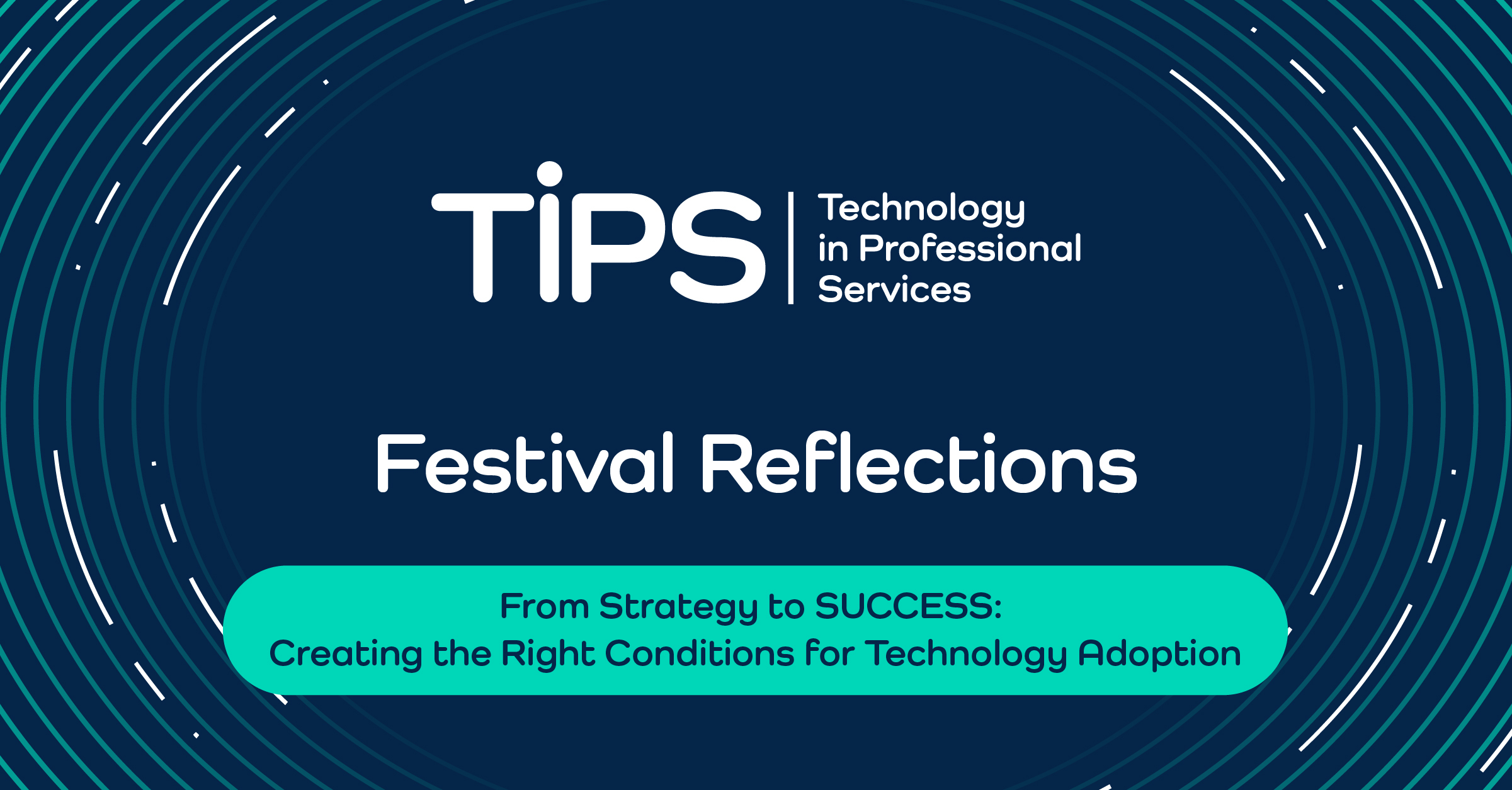Technology adoption in professional services isn’t just about choosing the right tools—it’s about creating an environment where innovation can flourish. A recent discussion from the Technology in Professional Services (TiPS) research project’s Festival of Adoption Acceleration reveals valuable insights from VWV, a mid-sized law firm that successfully implemented AI-powered meeting transcription technology through an innovative traineeled program.
The Strategic Foundation: Why Leadership Buy-In Makes All the Difference
“It sounds simple, but it starts with strategy,” explains Martin Hasler, VWV’s Innovation Manager. The firm’s success began with clear strategic pillars around best practice, smarter working, and innovation embedded at the highest levels. This wasn’t just lip service— innovation became “part of our DNA” as a firm-wide objective.
The impact of this strategic alignment was immediate and practical. When requesting trainee time for innovation projects or engaging department heads, conversations became “very easy” because everyone shared the same goals. There was no resistance from training supervisors, and the reception was entirely positive across all levels.
This top-down strategic commitment is crucial because it eliminates the friction that often kills innovation projects before they begin. Without it, technology initiatives become isolated experiments rather than integrated business improvements.
Empowering the Next Generation: The Trainee Advantage
VWV’s approach of engaging trainee solicitors in their innovation program reveals a powerful insight: junior staff are uniquely positioned to drive technology adoption. As trainee Claire HuiBonHoa explains, trainees are “really well placed to understand the pain points in the business as they’re learning them.”
The firm used design thinking principles – empathize, define, ideate, prototype, and test to structure their innovation program. Trainees received training in both AI fundamentals and human-centered design, enabling them to identify genuine problems and develop practical solutions.
Claire’s team identified attendance notes as a major pain point through surveys within their family law department. Instead of spending hours creating detailed meeting notes, they implemented Meeting Insights, an AI tool that provides transcriptions, summaries, and action items automatically.
Beyond Efficiency: The Human Impact of Technology
The benefits of their solution extended far beyond time savings. In sensitive family law meetings discussing divorces and child custody issues, the technology enabled both the trainee and supervisor to be “a lot more engaged in the meeting instead of me being head down scribbling notes.”
This human-centered outcome demonstrates why successful technology adoption focuses on enhancing relationships and professional development, not just operational efficiency. Claire could observe her supervisor’s questioning techniques and client management skills rather than focusing solely on notetaking, significantly advancing her professional development.
Navigating Resistance: Communication and Continuous Engagement
Even with strong strategic support, implementation challenges emerged. Partners occasionally resisted when trainees prioritized innovation work over billable tasks, creating tension between immediate revenue and long-term improvement.
Martin’s approach to managing resistance was refreshingly straightforward: regular, ongoing conversations tailored to the audience. The design thinking framework helped here too – having trainees document problems and solutions provided clear evidence to address skeptics.
For compliance and administrative concerns around AI, Martin focused on reassurance about data privacy and security considerations. “If you’re worried about training data and your information going out into the wild, actually we’ve dealt with that one,” became a key message.
The Sustainability Challenge: From Innovation to Business as Usual
Perhaps the most critical insight from VWV’s experience concerns sustainability. As Martin notes, “There’s no point going through innovation and coming up with an idea if it just dies and falls off a cliff.”
The firm faces the common challenge of transitioning innovation projects into standard business operations. They’re working to identify “owners” for each capability – people who can champion ongoing adoption and use without requiring constant technical management.
This transition from innovation project to business-as-usual capability represents one of the biggest challenges in professional services technology adoption. SUCCESS requires clear handover processes, appropriate resource allocation, and continuous openness to improvement.
Key Lessons for Professional Services Leaders
VWV’s experience offers several actionable insights for other professional services firms:
Start with Strategy: Embed innovation goals into firm-wide strategic objectives to eliminate resistance and create natural buy-in across all levels.
Leverage Junior Talent: Recent graduates and junior staff offer fresh perspectives and are well-positioned to identify pain points while building valuable innovation skills.
Use Human-Centered Design: Focus on solving real problems that affect daily work life, not just implementing technology for its own sake.
Communicate Continuously: Regular, tailored conversations with different stakeholders help address concerns and maintain momentum.
Plan for Sustainability: Define ownership models and handover processes early to ensure innovations become permanent improvements rather than temporary experiments.
Embrace the Learning Process: View resistance and challenges as opportunities to refine approaches and build stronger solutions.
The Broader Impact: Building Innovation Capabilities
Claires’reflection on her experience highlights perhaps the most valuable outcome: “It stretched skills that you wouldn’t usually have as a trainee.” The proof of concept program built leadership capabilities, creative thinking skills, and commercial awareness that will benefit her throughout her legal career.
This dual benefit – solving immediate business problems while developing future leadersdemonstrates how thoughtful technology adoption programs can create lasting organizational capabilities beyond the specific tools implemented.
Professional services firms that create the right conditions for technology adoption don’t just improve their current operations – they build innovation muscles that will serve them well as technology continues to evolve. The key is remembering that successful adoption is ultimately about people, not just technology.
This news post is based on insights from the Technology in Professional Services (TiPS) research project’s Festival of Adoption Acceleration, featuring discussions with innovation leaders and legal professionals about their real-world experiences with technology implementation. Find more information about the festival here.

